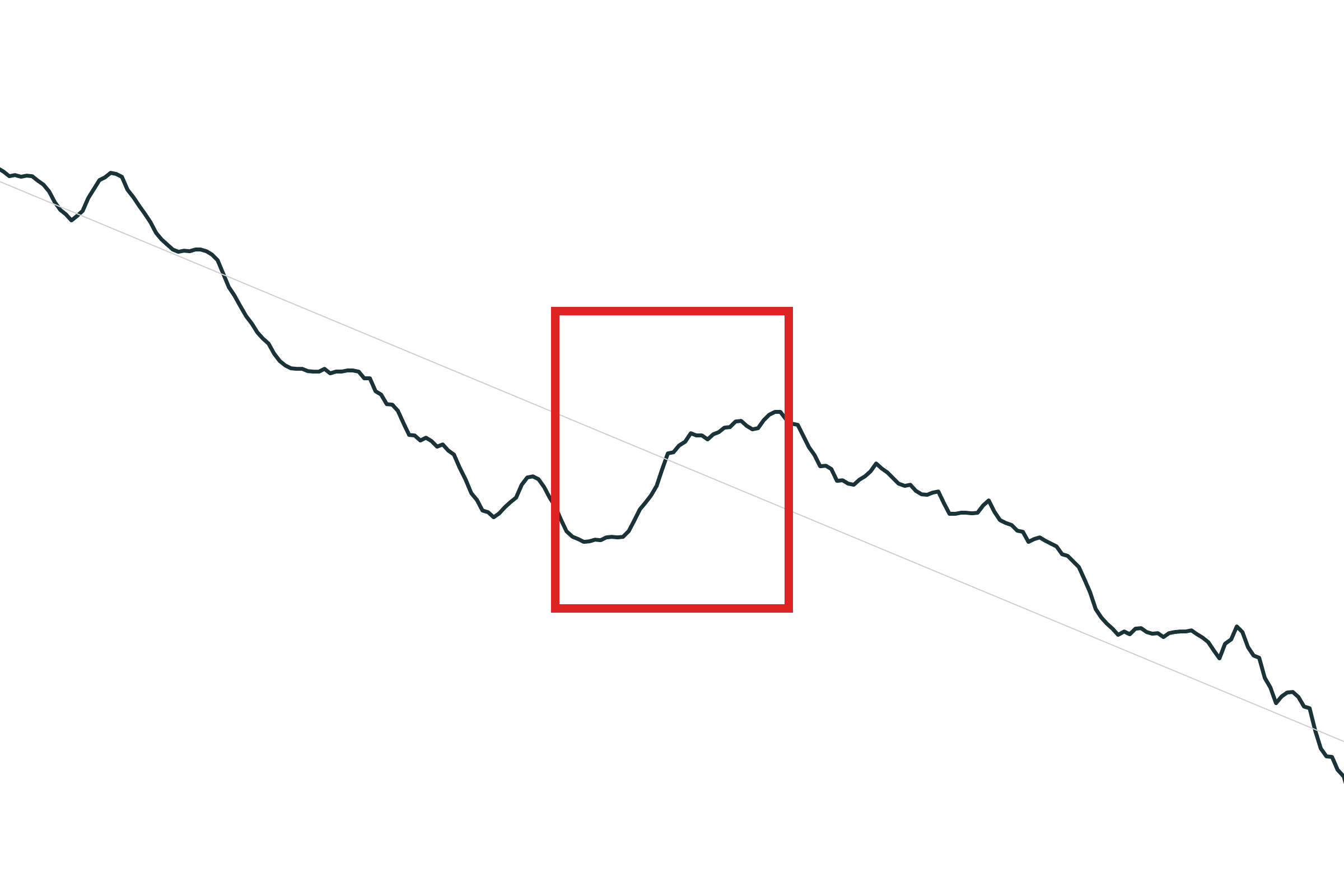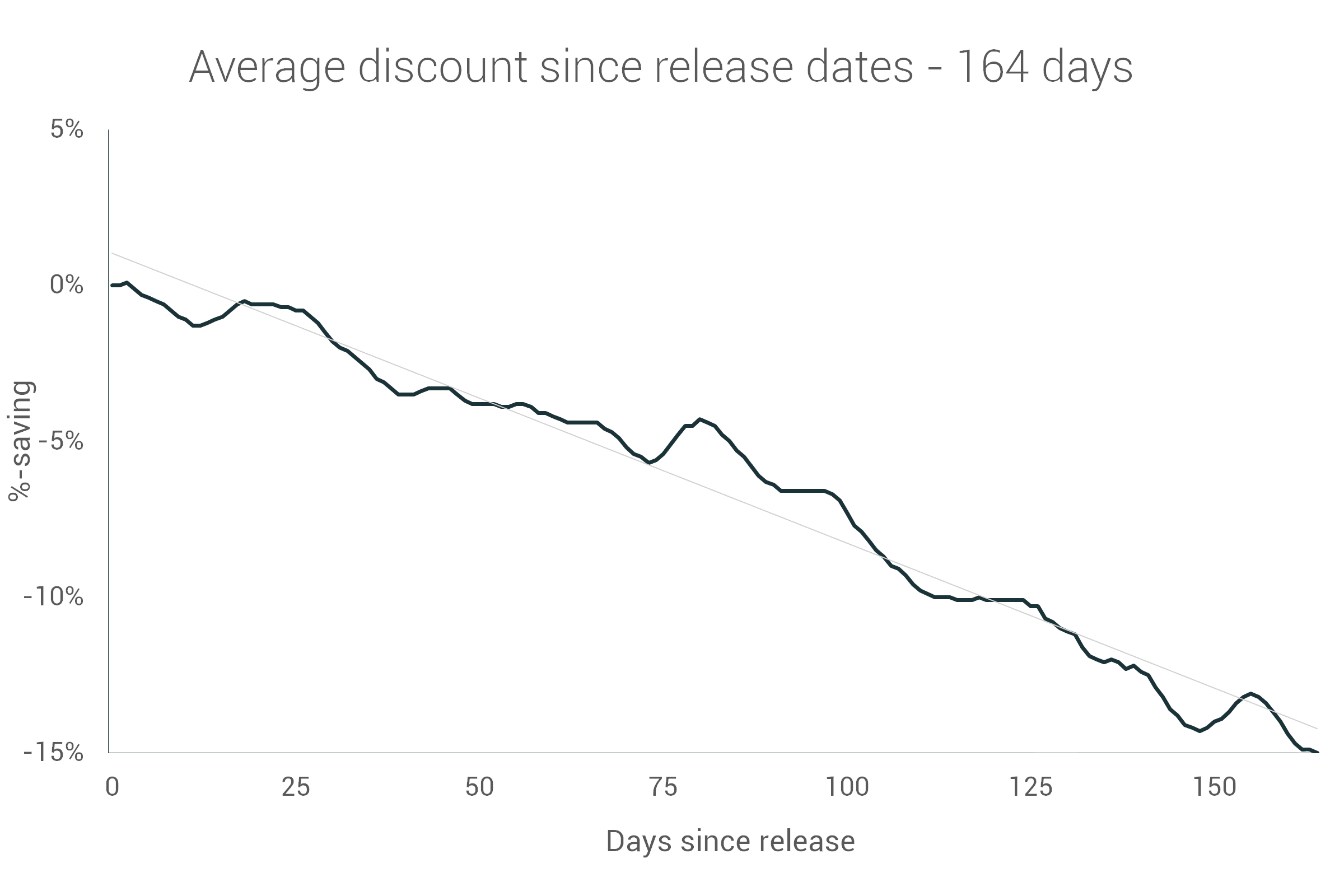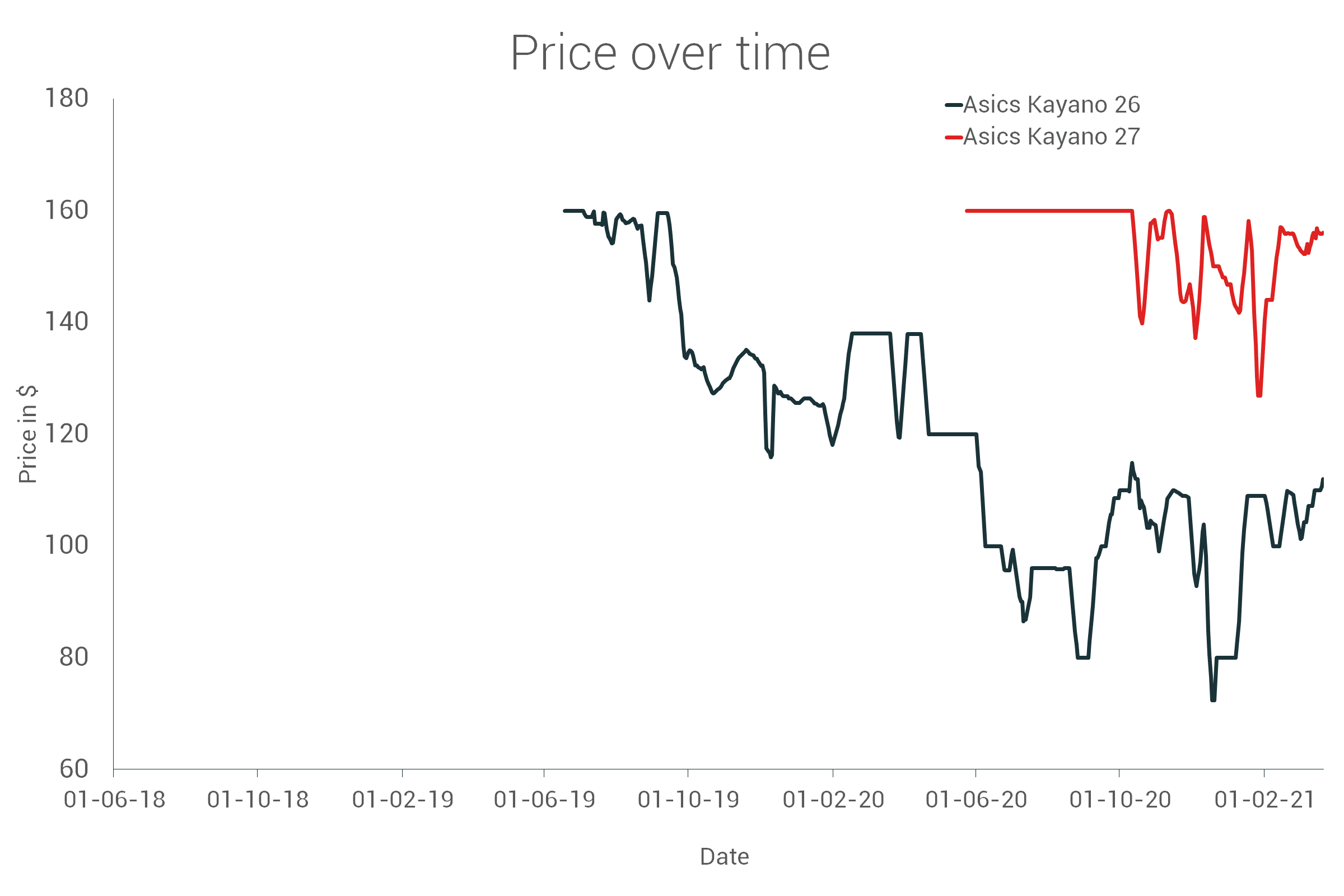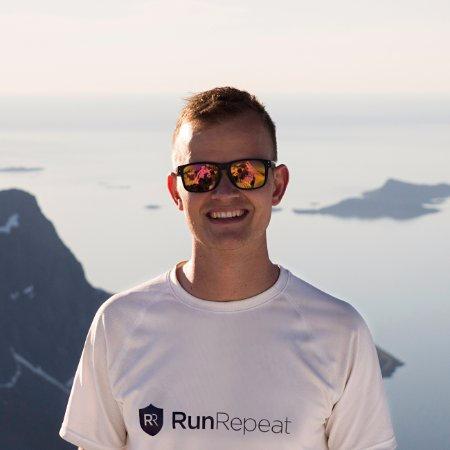Data Analysis: When Is the Best Time To Buy Running Shoes?
We’ve tracked 12 million price points on more than 2000 pairs of running shoes and 5000 trainers over 7 years from +200 retailers to give you the scientific answer to when is the best time to buy.
Most articles say “spring” or “March/April” with the argument that this is when new models are replacing old models so the old models are sold cheaper. We’ll be testing that hypothesis out in this article to see if it holds true (hint: it’s not so simple).
Throughout this article, we focus on running shoes. However, we’ve found the exact same trend among trainers except for timeless models that are not updated year after year like the Nike Air Max 1 or the Stan Smith.
Key conclusions
- There’s no one month that saves you the most. If looking for a specific month, June has the lowest prices as most shoes are released in January, and prices are the lowest after 164 days since release.
- What matters (most) is the time since the shoe was released. To save 10% on average, wait 106 days (3+ months).
- At any point in time, you’ll save an average of about $30 using RunRepeat, but that includes newer as well as older models.
- Brands are good at keeping prices high, right until they launch new colorways. Policies from brands ensure high MAP-prices - policies that are removed when new versions or colorways are released.
Is there one month that’s cheaper than others?
The simple answer is no. Prices fluctuate day by day. Not even Black Friday is cheaper than the average day. Sure, there are some dips here and there, but nothing worth waiting for as it might be different year by year.
On RunRepeat, the average running shoe can be found at about a $30 discount at any given point, as illustrated by this price chart that summarises prices for all shoes.

When is the best time to buy running shoes in general
Across 2000 running shoes, the average price at the time of release is $113.82. However, as with most other things, prices vary. Some cost $60, some $250.
We then tracked each shoe’s price, regardless of when it was launched to find an average price trend based on the time of the release. The trend is clear, down!

How much can you actually save by waiting?
The formula is simple: $113.82 minus $0.075 for every day since launch. Here are a few examples:
- Wait 1 month, and you’ll save $2.33
- Wait 6 months, and you’ll save $13.95
- To save 10%, wait 152 days
- To save 20%, wait 304 days
It might seem like a long wait to save 20%, but keep in mind that a) this is for new releases and b) it’s average across the board. Some will be -60% after 304 days, and some will not have any discount at all.
This obviously depends on the brand, your size, the specific model and its popularity over time, etc.
Digging deeper into the chart on savings
You might have noticed the increase in price around 6 months in (see a zoomed-in image below). The reason for this is that most shoe brands run a spring/summer (SS) collection and an autumn/winter (AW) collection.

When a shoe is launched in January, it will be part of the spring/summer-collection (even though it’s still winter). For running shoe brands, this is when most new models are released.
Then, 6 months later, they replace all the colorways of the same shoe with new colorways for the autumn/winter collection. The shoe is the same, only the colours are different.
The “old” colorways are phased out, which increases prices before a new decline in prices starts to happen. What’s interesting is that the new colorways are typically priced at the MSRP (manufacturer’s suggested retail price = the price we don’t want to pay), so they’re not the cheapest colorways - at least not in the beginning.
Because of this, we need two trend lines: one for the first 6 months and one for the 2nd life cycle with the autumn/winter collection. This is what it looks like:

Using this more accurate chart for the first 6 months, the formula becomes $113.82 minus $0.107 for every day since launch. Here are a few examples:
- Wait 1 month, and you’ll save $3.21 (instead of $2.33)
- Wait 6 months, and you’ll save $19.26 (instead of $13.95)
- To save 10%, wait 106 days (instead of 152 days)
- To save 20%, wait 212 days (instead of 304 days)
Another way to look at it is to focus on the percentage saving, which the chart below illustrates:

Price alerts are what will save you bucks.
Our general recommendation is not to look at buying at a specific month, but instead to signup for price alerts on specific shoes and buy when you find the price reasonable. Prices vary a lot from shoe to shoe.
Below illustrates the price over time of the very popular Nike Pegasus in two different versions.

As you can see, the Pegasus 36 was released in 2019. After a few months, the cheapest price across any size quickly dropped from the retail price of $120 to $70-$95. It regularly jumps up and down but stays in this region for 1½ years.
More recently (in 2020), Nike launched the successor, Nike Pegasus 37, which remained at MSRP at $120 for almost 6 months before it immediately dropped down to $60-$85. It dropped exactly as the new colorways were released.
The somewhat same pattern we see here for another popular shoe model, the Gel Kayano from Asics:

It seems that the Kayano 26 has reached the lowest price point, and from here it’s about daily fluctuations. For the Gel Kayano 27, we’re still waiting for the big drop.
Looking at these 3 (or 4) shoes, we see that the drop doesn’t always happen at the same month or date. Many factors are influencing this.
Now, if you’re a deal hunter, go here for running shoes, trainers or hiking boots.
